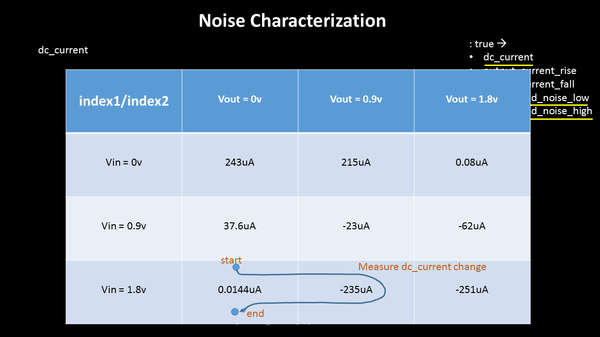Here’s the setup to measure dc_current, a very popular pin-level group used for CCS noise modelling.
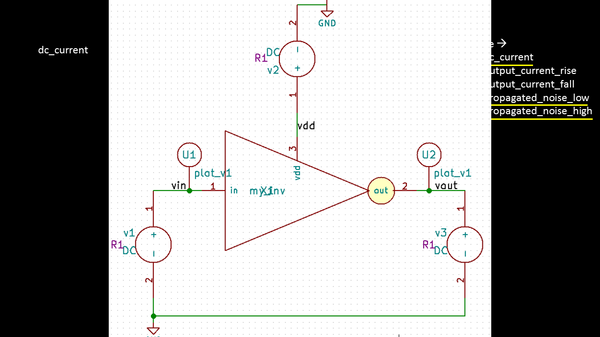
This needs a 2-dimensional DC sweep analysis, where input voltage is swept for a constant output voltage, and static current is measured at output node ‘vout’ for each swept input voltage point. Next, we sweep output voltage by a unit, and again, the input voltage is swept for that new output voltage, while we dump dc_current scalar values for each combination of input and output voltage. Below is how it looks like:
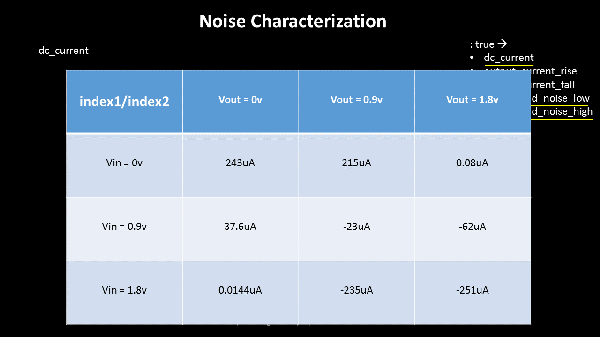
And below is a standard output of dc_current waveform, with Vout at 0v, while Vin is swept from 0v to 1.8v
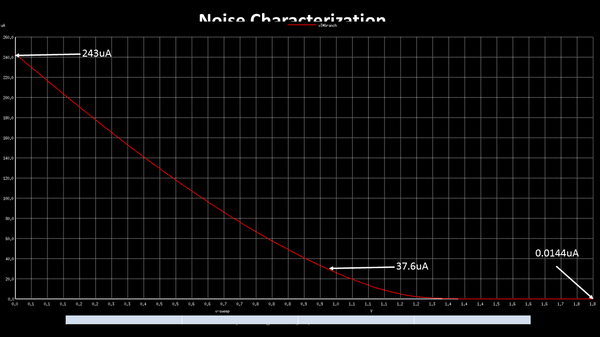
So how will this be used? That’s tricky…If you look into below image, where victim output which is supposed to be at logic ‘0’, suddenly sees an c in its voltage level due to nearby aggressor attacking it. In such cases, you just need to keep on measuring current of respective vin and vout.
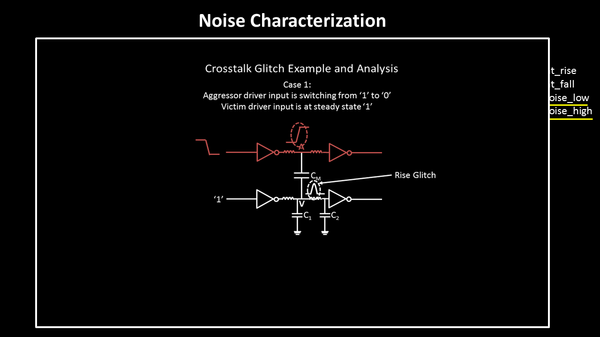
And this is the path of dc_current measurement..
